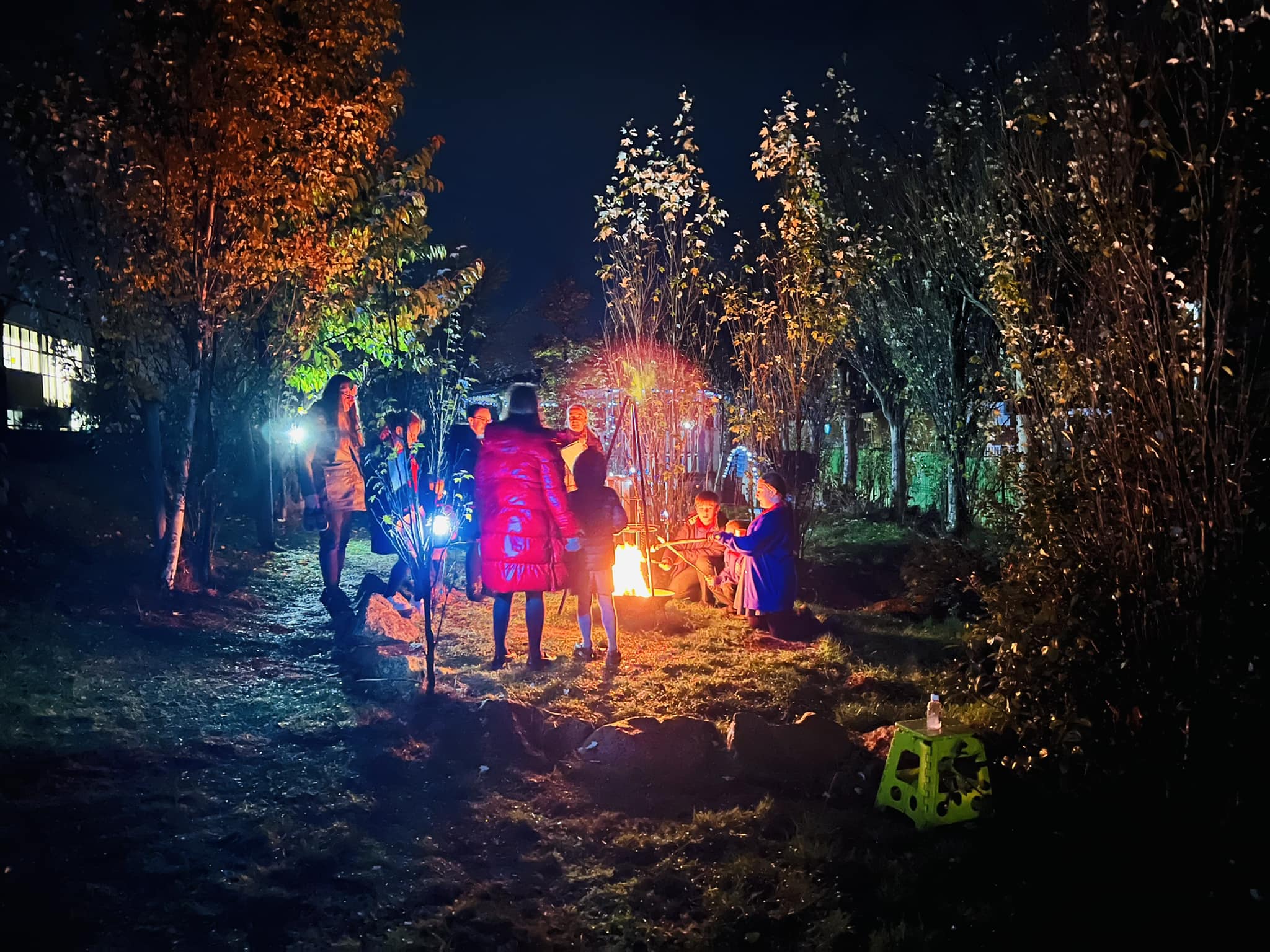
![In2Nature - The Beauty of Fog [Wingate, County Durham]](https://media.licdn.com/dms/image/D4E12AQE5dG9OhcmweQ/article-cover_image-shrink_600_2000/0/1692358871059?e=1697673600&v=beta&t=Q9g7-0C4Gw_urWReCRkVgq7dfthMGxomPturN-BojFk)
So, what are Forest Schools?
Forest schools have their origins in Scandinavian countries, particularly Denmark, where the concept was first developed in the early 20th century. The idea was to provide young children with a nature-based and experiential learning environment that focused on holistic development. The forest school movement gained traction in other countries over the years, including the United Kingdom and the United States, each adapting the concept to their own cultural and educational contexts.
My experience started as a child loving the outdoors, building dens, climbing trees, making bows and arrows, potions and just exploring the local environment with my mates. Fast forward to my mid 20’s and starting a new job at a local Nursery School as a Training and Development Officer. To allow me to have a link with the children in Nursery I was asked to undertake a Forest School Qualification – Forest what? Was my reply. Looking into it and understanding the term, jumped at the chance.

Achieving my Level 3 Forest School Leader qualification I embarked on a nearly 15 years of leading and support a Forest School session every Friday. It was lovely to get us in nature and enjoy everything it has to offer. Seeing some shy or disengaged children open up and communication when outside make it so worthwhile.
Fast forward another 5 years here I am at Orangebox Training. Developing and creating a 1 day course that gives an overview on what Forest School is and fits into a school timetable. A lot of accredited Forest School qualifications are heavy with guided learning hours making it sometimes impossible to release staff due to cover costs. This course fits perfectly into a PD day, with half theory and half practical making it also a great team building session also. To find out more about this engaging course email: pd@orangeboxtraining.com.

This weeks blog will give a brief overview of the history of forest schools and it’s principles:
1. Early Roots in Denmark (1950s-1960s): The forest school concept was pioneered by Danish educationalists such as Ella Flatau and Anne-Marie Helger in the 1950s and 1960s. They aimed to create an alternative learning approach that would allow children to spend extended periods of time in natural settings, engaging in self-directed play, exploration, and learning.
2. Introduction to the UK (1990s): Forest schools were introduced to the United Kingdom in the 1990s, largely inspired by the Scandinavian model. The movement gained prominence through initiatives led by early childhood educators, environmentalists, and proponents of experiential learning. The Forest School Association (FSA) was established in the UK in 2012 to promote and support forest school practices.

3. Expansion to Other Countries: The forest school concept gradually spread to other countries, including the United States, Canada, Australia, and various European nations. Each country adapted the concept to suit its own cultural and educational landscapes.
4. Key Principles and Philosophy: Forest schools are based on several key principles and a philosophy that emphasizes the benefits of nature-based learning. These principles include child-led and play-based learning, regular and sustained interactions with nature, building resilience, fostering curiosity, and supporting holistic development encompassing physical, emotional, social, and cognitive aspects.

5. Research and Recognition: Over the years, research has increasingly shown the positive effects of forest school programs on children’s development, including improved self-confidence, social skills, creativity, problem-solving abilities, and physical fitness. This research has contributed to the growing recognition and acceptance of forest schools as a valuable educational approach.
6. Integration into Formal Education: While forest schools often started as informal programs or as a supplementary educational approach, some countries have integrated forest school principals into formal educational systems. This might involve incorporating outdoor and nature-based learning into school curricula, even in urban settings.
7. Continued Growth and Challenges: Forest schools continue to grow in popularity due to their focus on hands-on learning, outdoor exploration, and connection to nature. However, challenges such as funding, access to suitable natural spaces, and the need for trained educators remain areas of concern for the sustainability and expansion of forest school programs.

To recap, the history of forest schools traces back to Denmark and the Scandinavian region, where the concept of providing children with regular and immersive experiences in natural settings was first developed. The movement has since spread globally, adapting to various cultural and educational contexts while maintaining its core principles of nature-based, child-centered learning.
The principles of Forest School were developed in the United Kingdom and have gained popularity in various parts of the world. The key principles of Forest School include:
1. Regular and Repeated Visits: Forest School sessions are held on a regular basis, allowing participants to develop a deep connection with the natural environment and observe changes over time.
2. Outdoor Learning: The core of Forest School is outdoor learning, where participants engage with nature and the elements directly. This approach encourages hands-on experiences and fosters a sense of wonder and curiosity about the natural world.

3. Child-Led and Play-Based Learning: Forest School encourages child-led learning, where participants have the freedom to choose activities and pursue their interests. Play is a crucial component, as it supports creativity, problem-solving, and social interactions.

4. Holistic Development: Forest School aims to promote holistic development, including physical, emotional, social, and cognitive aspects. Activities are designed to address these different areas of development in an integrated manner.
5. Risk Management: Forest School places importance on managed risk-taking. Participants are allowed to engage in activities that might involve some level of risk, but these risks are carefully assessed and managed to ensure safety while still challenging participants’ boundaries.

6. Building Positive Relationships: Forest School fosters positive relationships between participants, educators, and the natural environment. Strong connections with both peers and the outdoors contribute to a sense of belonging and well-being.
7. Reflection and Review: Reflection is a key component of Forest School. Participants are encouraged to reflect on their experiences, learn from them, and share their insights with peers and educators. This process helps to reinforce learning and personal growth.

8. Sustained Engagement: Forest School sessions are typically longer in duration compared to traditional classroom sessions. This extended time allows participants to engage deeply with their surroundings, develop skills, and build a sense of confidence and competence.
9. Supportive and Respectful Environment: Forest School educators provide a supportive and respectful environment where participants feel valued and encouraged to express themselves freely. This environment helps to nurture self-esteem and a positive attitude towards learning.
10. Nature Connection and Environmental Awareness: Forest School promotes a strong connection to nature and encourages participants to develop an understanding of ecological systems, fostering a sense of responsibility and care for the environment.

It’s important to note that while these principles provide a framework, the implementation of Forest School can vary based on local contexts, available resources, and the specific needs of the participants. The overall goal is to provide a rich and nurturing outdoor learning experience that promotes personal and social development while fostering a deep connection with the natural world.

If you would like to discuss Forest School Training, please contact our experts on 01429 717000 opt3 or by emailing pd@orangeboxtraining.com

“The Best Classroom is only Roofed by the Sky” [Margaret Mcmillan]
“Once a Wingate Kid, always a Wingate Kid” paddy beels [Wingate Nursery School Heateacher and International Consultant]



